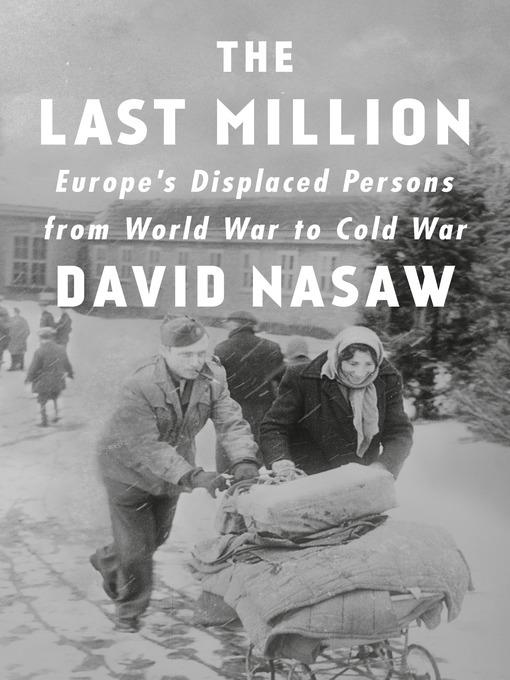
The Last Million
Europe's Displaced Persons from World War to Cold War
کتاب های مرتبط
- اطلاعات
- نقد و بررسی
- دیدگاه کاربران
نقد و بررسی

Starred review from June 15, 2020
Historian Nasaw, known for biographies of industrial moguls, turns his attentive gaze on the period immediately following the end of World War II in Europe. When the Third Reich finally collapsed in May 1945, millions of displaced persons, including forced laborers and prisoners of war, were stranded in the ruins of Germany. Not all were blameless victims, notes the author. Many, especially from the Baltic states, were anti-communists who had willingly joined the Waffen-SS and thrown themselves into the killing of Jews, Roma, and other "undesirable" people. This masterful book centers on "displaced Eastern Europeans who, when the shooting stopped, refused to go home or had no homes to return to." Some were Polish Catholics who had been forced to work in German factories but had no wish to return to a homeland occupied by Soviet troops. A small minority, fewer than 30,000, were Jewish survivors of the Shoah who tried to repatriate themselves to Germany only to find that they were not wanted and so moved on, eventually, to Israel and the U.S. And those Eastern European Nazis? Australia took in many of them, favoring white, Protestant Latvians and Estonians who were volubly anti-communist; as Nasaw writes, Australia resettled more refugees than any other nation, though only 4.5% were Jews. Britain favored Polish soldiers who had fought under British command as well as "a thousand single young female Latvian, Lithuanian, and Estonian displaced persons [who] were recruited to work in understaffed tuberculosis sanitaria." Canada screened rigorously for evidence of Nazi collaboration and admitted more Jews than other Commonwealth nations, while the U.S. overlooked wrongdoing almost entirely. One of Nasaw's many intriguing cases in point is a Romanian Iron Guard leader who became a faux preacher and "was invited by Richard Nixon to deliver the opening prayer at the convening of the 1955 Senate session." Deported to Portugal in the early 1980s, he died a free man. A searching, vigorously written history of an unsettled time too little known to American readers.
COPYRIGHT(2020) Kirkus Reviews, ALL RIGHTS RESERVED.

Starred review from July 6, 2020
Historian Nasaw (The Patriarch) delivers a richly detailed account of what happened to the one million Holocaust survivors, former slave laborers, and POWs who found themselves in Germany at the end of WWII. He reveals the contempt some military occupation leaders, including Gen. George Patton, felt for these displaced persons, and expertly documents how a humanitarian approach to the crisis often yielded to narrow, long-term foreign policy goals and Cold War considerations. Nasaw details England’s hyperrestrictive policies on Jewish immigration to Palestine, and the nativist, anti-Semitic stances of U.S. lawmakers who were more focused on preventing communists from slipping into America under the 1948 Displaced Persons Act than they were on stopping Nazis from doing so. As a result, Nasaw writes, “untold numbers of anti-Semites, Nazi collaborators and war criminals acquired entrance to the United States.” Besides allowing enemy collaborators to enter the country, Nasaw contends, America’s incoherent policy also contributed to the last displaced persons not leaving Germany until 1957, a full 12 years after WWII ended. Nasaw skillfully and movingly relates a multilayered story with implications for contemporary refugee crises. This meticulously researched history is a must-read.

Starred review from August 1, 2020
Forcefully relocated first by a massive population culling, then war, and finally by its armistice, hundreds of thousands of Europeans left slave labor and death camps during the spring and summer of 1945. Consisting primarily of Polish Catholics, Baltics and Ukrainians, and Jews, the "wandering horde" also included Nazi war criminals and collaborators. While some of these displaced persons returned to homes and families that also survived the horrors of the war, many, by choice or necessity, did not. For nearly a decade, these one million refugees were pawns in international repatriation disputes, the repercussions of which are still felt today. In this lengthy tome, biographer and historian Nasaw (The Graduate Center, City Univ. of New York; Andrew Carnegie) does a masterful job of bringing to light the lasting individual and global consequences of policies and attitudes surrounding the last million. He also traces their lives as they settled in the United States, Canada, Brazil, and Australia, among other countries. As Nasaw reminds readers, contemporary issues surrounding immigration, the Cold War, the Israeli-Palestinian conflict, and U.S involvement in European and Middle East politics originate here. VERDICT A thought-provoking, highly recommended perspective on a complex and largely overlooked people and period of modern history.--Linda Frederiksen, formerly with Washington State Univ. Lib., Vancouver
Copyright 2020 Library Journal, LLC Used with permission.

























دیدگاه کاربران